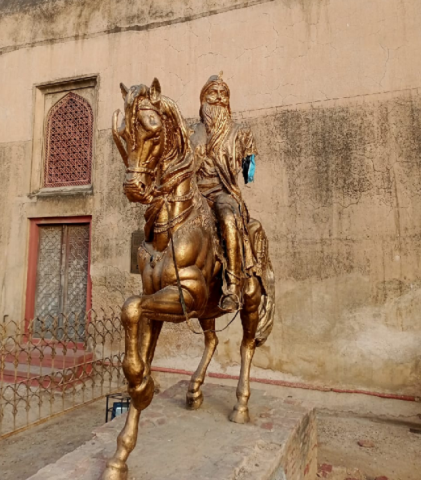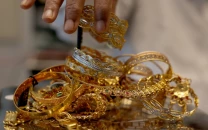A monument to Ranjit Singh’s exploits
Samadhi resembles the palace of a living king, with its twelve doors symbolizing the twelve gates of Lahore

The Samadhi of Maharja Ranjit Singh stands in celestial peace and tranquility in Lahore. The site wears the truthful depiction of the word ‘Samadhi,’ connoting ‘fixing one’s mind and soul on God,’ in the Sikh etymology.
Sikh yatrees from India will perform ‘Akhand Path’ – a series of rituals – to commemorate the 183rd death anniversary of Ranjit Singh at the Samadhi on June 27.
The Samadhi provides a meditational space for the followers of Sikhism at the very site where Maharaja Ranjit Singh’s cremation was performed. The ashes were immersed in a body of water, while the remainder were preserved in a lotus urn and placed at the very spot where the Maharaja breathed his last. The urn, surrounded by smaller urns of Singh’s four queens and seven concubines, is placed in a marble pavilion inlaid with pieta dura, depicting a monarch sitting in his court.
Ranjit Singh is a major figure in Sikh history as he created and ruled the Sikh Empire, with a population of 3.5 million, as per the records of 1831. The Sikh Empire rose after the capture of Lahore by Ranjit Singh in 1799 and culminated in the Sikh defeat at the hands of British forces in the Second Anglo-Sikh War of 1849. The Samadhi was erected 18 feet above ground and carries the Nishan Sahib, a symbol of functionality of a gurdwara in Sikh traditions. The construction was started by his son and successor, Kharak Singh and completed by his younger son, Duleep Singh, in 1848.
The Samadhi’s front wall encroaches over the Roshni Gate, one of the entrances to the Lahore Fort and meanders along the northern wall of the majestic Badshahi mosque. It overlooks the Hazoori Bagh, built by Ranjit Singh in 1818, to mark the capture of the Koh-e-Noor. The Hindu deities Brahma, Shiva and Ganesh are etched on the entrance stair-case to the Samadhi, while the architecture is a combination of Hindu, Muslim and Sikh motifs.
The Samadhi resembles the palace of a living king, with its twelve doors symbolizing the twelve gates of Lahore and providing an omnipresent view of a King’s court, where subjects come for supplication. The balconies on the Samadhi’s upper story make one believe the queens may appear at any moment to watch the proceedings downstairs.
Najam-us-Saqib, Director Conservation and Planning WCLA, believes that Sikh architecture is an extension of Mughal architecture and that additions to the Shish Mehal were replicated in the Samadhi. He believes the Samadhi has a grandiose look, similar to the resting places of great emperors including Akbar, Babur and others. Frescos adorn the ceilings, while the interior of the cupolas is covered with gold-water. According to some traditions, 10 kilograms of gold was used to adorn the art-work, which is still visible today.
The interior of the Samadhi complements the gilded domes on the exterior. The upper story of the Samadhi has ornamental balustrades and the artisans, most likely Hindu, depicted various historical pageants in their works.
Member Punjab Assembly (MPA) Ramesh Singh Arora said that Ranjit Singh created a special identity for Sikhs through his military exploits and embodied the pride of Punjab. Arora added that Ranjit Singh’s services to the land need to be revered without religious bias, adding that the Pakistan Muslim League-Nawaz (PML-N) government adopted a unanimous resolution in the Punjab Assembly during its previous tenure, to pay homage to Singh. He proposed that the history of Ranjit Singh’s era be taught in the curriculum.
Chairman Evacuee Trist Property Board (ETPB) Habib ur Rehman Gilani said that the Samadhi of Ranjit Singh is a revered site and was preserved as per Sikh traditions.
He added that some pillars at the Samadhi were damaged in 1962 but preserved after the intervention of then President Ayub Khan. He said the 183rd death anniversary is being observed with religious fervor and all arrangements have been made to facilitate Sikh yatrees.
Published in The Express Tribune, June 27th, 2022.



















COMMENTS
Comments are moderated and generally will be posted if they are on-topic and not abusive.
For more information, please see our Comments FAQ